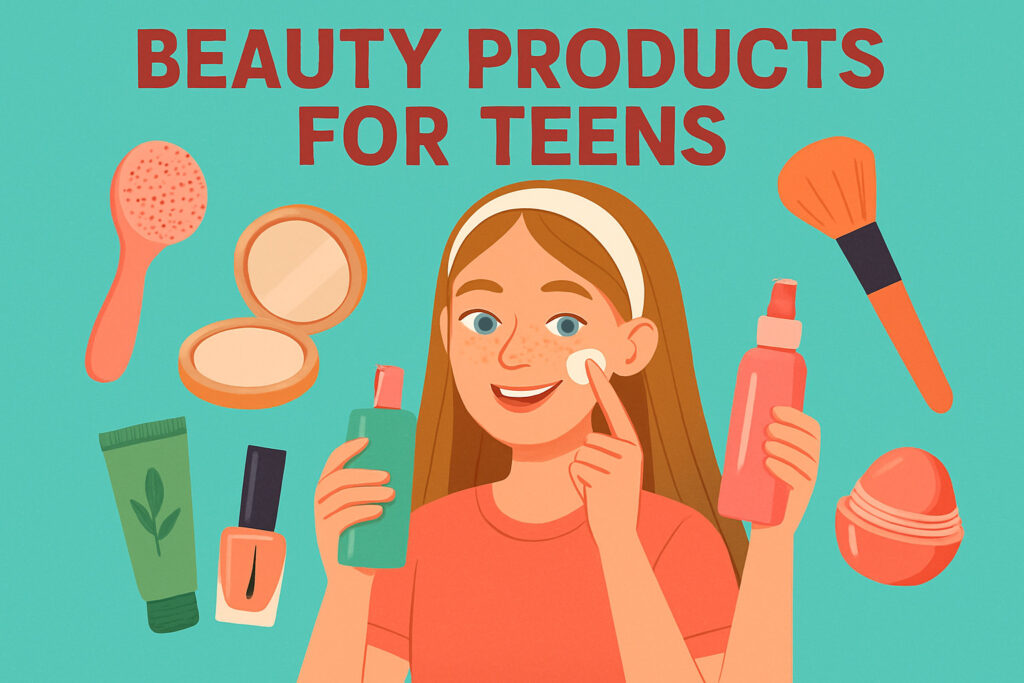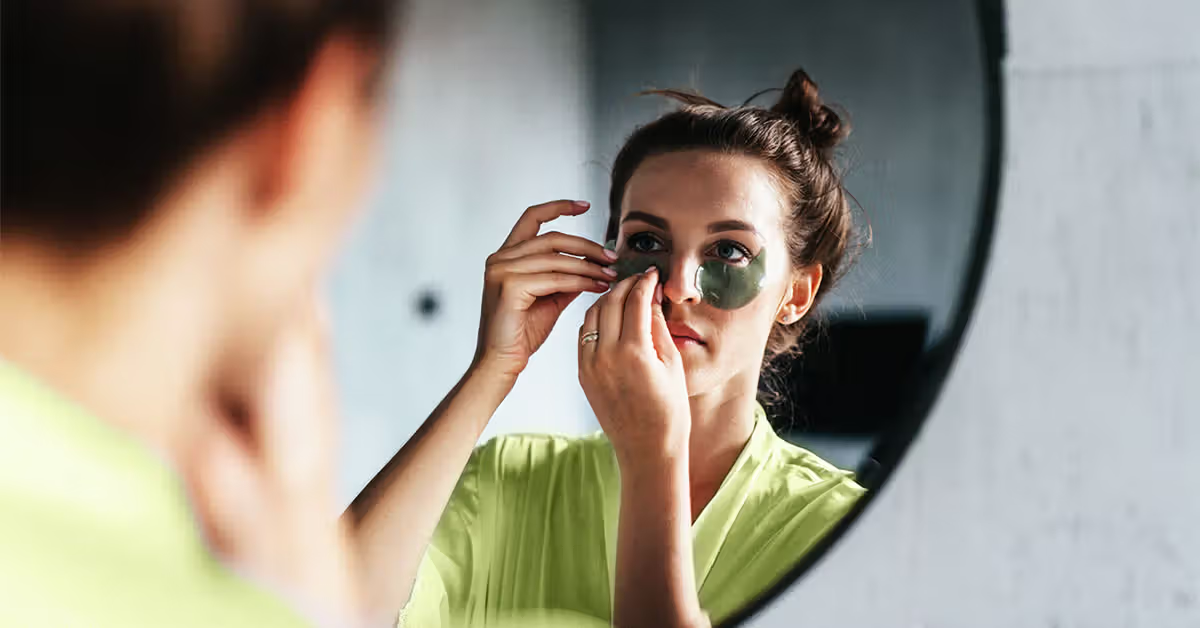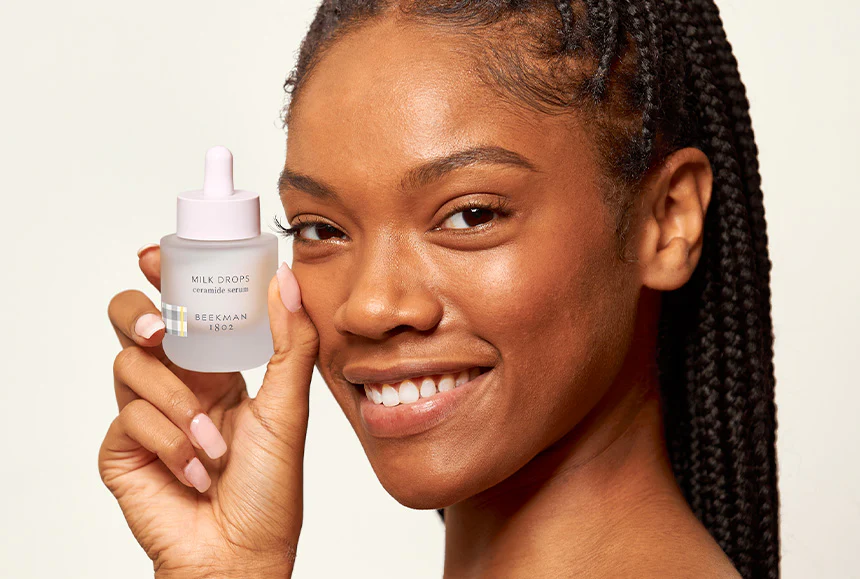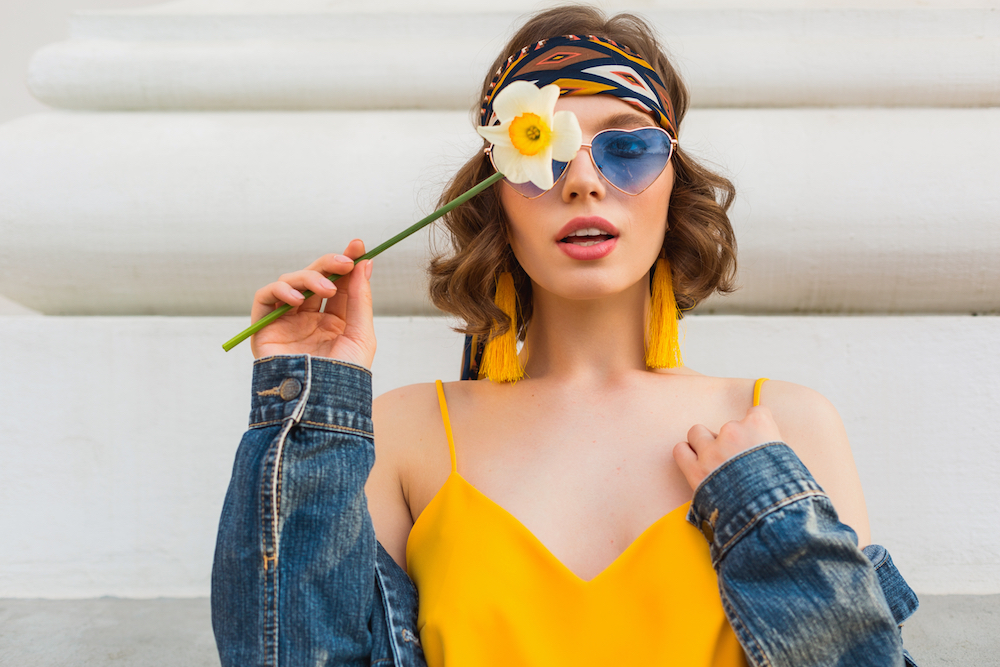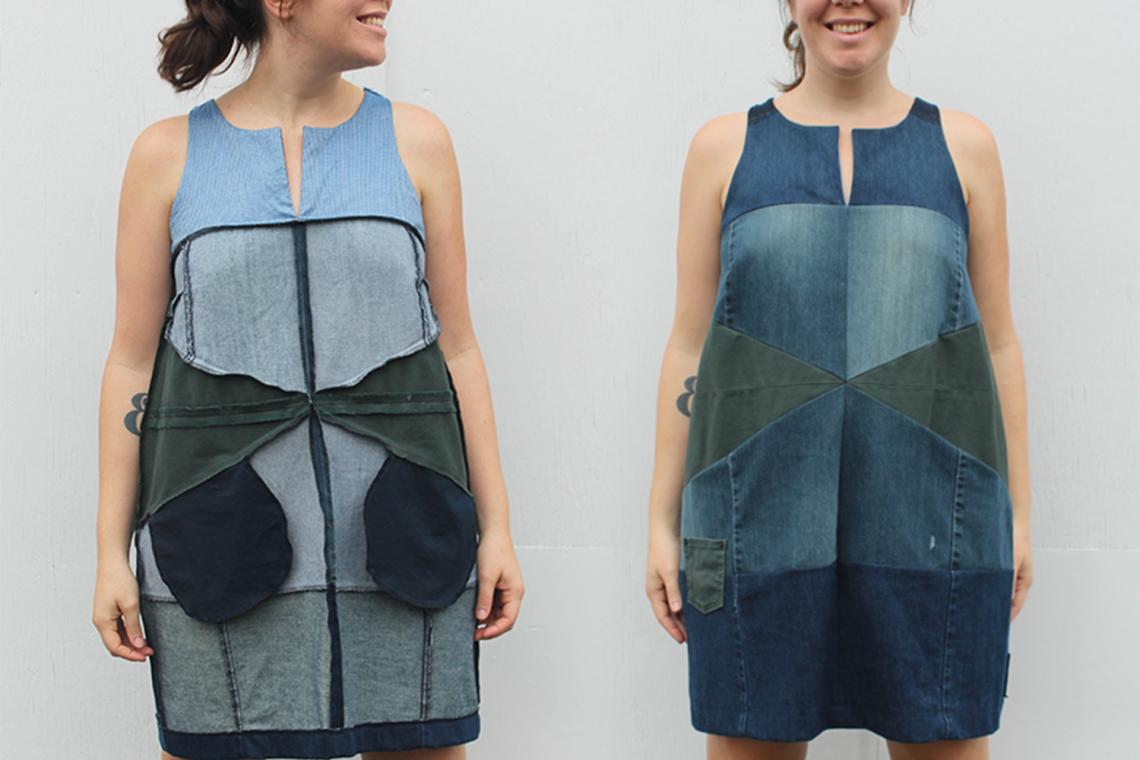Finding the Right Beauty Essentials for Young Skin
Navigating Beauty products for teens can feel overwhelming at first. Young skin has its own unique needs – it’s neither child skin nor adult skin, but something wonderfully in-between that deserves special attention.
When I talk with teens about skincare, I always emphasize that simplicity is your best friend. Your skin is going through natural changes as hormones kick in, and bombarding it with complicated routines can do more harm than good.
What does a teen truly need? Start with a gentle cleanser that’s sulfate-free and pH-balanced to wash away impurities without stripping your skin’s natural moisture. Follow with a lightweight moisturizer that’s non-comedogenic (meaning it won’t clog pores) and oil-free to keep skin balanced. The non-negotiable step? A mineral sunscreen with at least SPF 30 for daily protection – trust me, your future self will thank you!
For those inevitable breakout moments, keep a spot treatment on hand. Hydrocolloid patches or a gentle 2% salicylic acid product can work wonders. And if you’re venturing into makeup, start with the basics: a tinted lip balm, clear brow gel, and tubing mascara (which removes easily without harsh makeup removers).
Dermatologist Dr. Sreedhar Krishna offers some helpful guidance: “Twelve is a good ballpark age but it comes down to the onset of puberty. This is when hormonal changes can lead to skin issues like acne.” This is when establishing those foundational skincare habits becomes so important.
What makes teen skin different? It’s in a delicate transition phase. Dr. Emma Craythorne explains it perfectly: “Teenage girls need very gentle products with minimal ingredients. They have delicate skin and it should be protected.” Your skin barrier is still developing, which is why harsh products can sometimes trigger reactions that you might not experience later in life.
I’ve been amazed watching how today’s Gen Z has transformed the beauty industry. You’re incredibly informed about ingredients, sustainability, and the potential long-term effects of what you put on your skin. You’re actively seeking out brands with clean formulations that avoid harsh chemicals and potential hormone disruptors during these important developmental years.
Remember this golden rule: cleanse, moisturize, protect with SPF, and spot-treat only when needed. Your skin is already doing its amazing thing – your job is simply to support it with gentle care.

Cleanse Like a Pro: Best Face Washes & Micellar Picks
Let’s talk about the all-important first step in any teen skincare routine – finding that perfect cleanser! During the teenage years, your skin is going through some major changes (hello, extra oil!), but that doesn’t mean you need harsh products that leave your face feeling tight and stripped.
“The main thing to keep in mind when it comes to younger skin is that we build a routine that is simple, effective, but one that doesn’t overwhelm the skin barrier,” explains Dr. Anjali Mahto, who knows a thing or two about teen skin concerns.
When shopping for Beauty products for teens, look for cleansers that match your skin type. Got oily or combo skin? Gel or foam cleansers are your friends. More on the dry or sensitive side? Cream or milky cleansers will be gentler. Whatever you choose, aim for pH-balanced formulas (around 5.5) that work with your skin’s natural chemistry, and whenever possible, skip added fragrances that might irritate.
Why Cleansing Matters for Beauty products for teens
Think of cleansing as the foundation everything else builds upon. When you’re a teen, your skin is working overtime in the oil department thanks to those hormonal changes. A good cleanser helps manage this oil production without going overboard and drying you out completely.
Every day, your skin collects all sorts of uninvited guests – pollution particles, sweat, dead skin cells, and sometimes makeup or sunscreen. Regular cleansing helps sweep away these pore-cloggers before they can cause breakouts. Plus, clean skin allows your other products (like moisturizers and treatments) to actually do their job properly!
Many teens are becoming more ingredient-savvy, and rightfully so! When you learn about skincare ingredients, you find that what’s NOT in your cleanser matters just as much as what is. Harsh sulfates like sodium lauryl sulfate can be too stripping, while unnecessary fragrances might trigger irritation.
Top Picks & How to Use

Your morning and evening cleansing routines should look a little different:
In the morning, keep it simple with a gentle water-based cleanser. You’re just washing away the sweat and oil that accumulated overnight, not heavy makeup or sunscreen. A gel cleanser works beautifully for oilier skin types, while creamier formulations provide extra comfort for drier or sensitive skin.
For evenings, especially if you’ve worn makeup, sunscreen, or just been out in the world collecting dirt and pollution, consider a double-cleanse approach:
1. Start with micellar water on a reusable cotton pad or a gentle cleansing balm to dissolve makeup and SPF
2. Follow up with your regular water-based cleanser to clean your actual skin
Before going all-in with a new cleanser, try a patch test first! Apply a small amount to your inner arm and wait 24-48 hours to make sure your skin doesn’t react negatively.
“When it comes to my younger clients, I see a lot of overuse of harsh chemicals. In pre-teen and teen years, you can never go wrong with a gentle skincare routine,” advises Dr. Michael Gowen. This wisdom is especially true for cleansers – you want clean skin, not squeaky-clean skin that feels tight and uncomfortable.
The best cleanser for your teen years is one that leaves your skin feeling comfortable, not stripped, and sets the stage for the rest of your simple but effective skincare routine.
Quench & Soothe: Serums, Mists, and Toners That Work
Once your teen has mastered cleansing, it’s time to introduce the hydration heroes: serums, mists, and toners. These lightweight products add essential moisture without feeling heavy or greasy—perfect for young skin that might shy away from heavier formulations.
I’ve noticed in my conversations with teens that products like The Ordinary’s Hyaluronic Acid 2% + B5 and Niacinamide 10% + Zinc 1% serums appear constantly in their TikTok skincare routines. These affordable options have gained massive popularity among younger users because they deliver impressive results without breaking the bank.

Age-Smart Hydration (13-18)
Finding the right hydration balance is crucial for teen skin. The goal is moisture that feels fresh and comfortable—never sticky or heavy.
For younger teens (13-15), simplicity is key. A refreshing alcohol-free toner can rebalance skin after cleansing, while a basic hyaluronic acid serum provides hydration without complexity. Many younger teens love hydrating face mists because they’re so easy to use between classes or after gym.
As teens move into their later years (16-18), they can explore slightly more targeted options. Niacinamide serums work wonders for managing oil production and minimizing the appearance of pores. Peptide mists offer early prevention benefits, while antioxidant formulas help protect against environmental damage that teens encounter daily.
I love teaching teens what I call the “skin feel check-in”—a moment to pause after applying products and notice how their skin feels. It should never feel tight or uncomfortable, nor should it feel greasy or slick. The sweet spot is balanced, comfortable hydration.
As 15-year-old Mia told me, “The Tower 28 face mist I saw on TikTok changed my life—I keep it in my backpack and use it whenever my skin feels stressed out during the day.”
Ingredient Spotlight
When shopping for beauty products for teens, certain ingredients stand out as particularly beneficial for young skin:
Niacinamide is truly a teen skin superstar. This gentle ingredient helps regulate oil production (perfect for hormonal skin), reduces the appearance of pores, calms irritation, and strengthens the skin barrier—all without being harsh or irritating. Even sensitive skin types typically tolerate it well.
Understanding the difference between humectants and occlusives can help teens make smarter choices. Humectants like hyaluronic acid and glycerin work by drawing water into the skin, creating instant hydration. Occlusives like squalane create a light protective seal that prevents that moisture from evaporating. Most teens do best with plenty of humectants and just lighter occlusives.
Today’s teens care deeply about the planet, and their skincare choices reflect this. According to research on sustainable beauty, Gen Z is actively driving the demand for environmentally conscious beauty products.
“I read ingredient lists not just to check what goes on my skin, but also to make sure my products aren’t harming the environment,” explains 17-year-old Aiden. “If a brand uses sustainable packaging and ethically sourced ingredients, that’s a huge plus for me.”
This conscious approach to beauty shows just how thoughtful today’s teens are—they’re looking beyond immediate results to consider the broader impact of their skincare choices.
Lock it In: Moisturizers, SPF, and Barrier Boosters
After cleansing and applying those lightweight hydrating products, it’s time for the step that makes all the difference – locking in moisture and protecting teen skin with the right moisturizer and SPF. And yes, this step is absolutely non-negotiable, even if your teen insists their skin is already “too oily”!

Dr. Emma Craythorne puts it perfectly: “Skincare should be taught from an early age. It is important that young children understand how to wash their hands and face properly as well as using SPF to protect their skin.” This foundation becomes even more vital during those teenage years when hormones are in full swing.
When shopping for moisturizers and SPF for teens, keep an eye out for products featuring ceramide-rich formulas that support the skin barrier, lightweight gel textures that won’t feel heavy on oilier skin, mineral SPF 30 or higher for daily protection, non-comedogenic labels to prevent clogged pores, and ingredients that protect against the blue light from all those hours of screen time.
Daily Moisture Checklist for Beauty products for teens
Mornings call for different moisture needs than evenings. For daytime, teens should reach for lightweight, fast-absorbing formulas that won’t leave them feeling greasy at school. Oil-free options work wonders for acne-prone skin, and products with added antioxidants provide that extra shield against environmental damage.
Come evening, teens can benefit from slightly richer formulas that replenish moisture overnight. Look for barrier-supporting ingredients like ceramides and peptides, and always opt for fragrance-free options to minimize the chance of irritation.
Teen twins Aleyah and Aleysha shared in an interview that they swear by Bubble Skincare’s moisturizer because “it’s not too thick and doesn’t clog their skin.” This highlights something important – texture matters tremendously for teen compliance. If it feels gross, they simply won’t use it!
For families interested in cleaner options, check out our guide to affordable organic skincare. The best products focus on plant-derived hydrators and barrier supporters rather than lengthy lists of potential irritants that might trigger teen skin.
Sun Protection 101
Let’s be real – sunscreen might be the single most important step in any skincare routine, especially for teens. Not only does it protect against skin cancer and premature aging (yes, it starts that early!), but it also helps prevent those stubborn dark spots that can linger after acne breakouts.
Sunscreen basics every teen should know: always choose SPF 30 or higher, look for the words “broad-spectrum” on the label (this means it protects against both UVA and UVB rays), apply it as the final step in morning skincare, and use about ¼ teaspoon for the face – which is actually more than most teens think!
Reapplication is where most teens struggle, but there are clever hacks to make it easier. Powder SPF works great for touch-ups over makeup, SPF setting sprays offer quick protection between classes, and stick formulas are perfect for reapplying after sports practice.
Different sunscreen formats suit different needs. Sticks are fantastic for quick application and tossing in a backpack, lotions provide the most even coverage and added hydration, while sprays offer convenience (though make sure to apply enough for adequate protection).
Our research found that Bubble Solar Mate Daily Mineral SPF 40 is a hit among teens. Dr. Marisa Garshick notes it’s “a great option for tweens, as it is non-comedogenic while effectively providing broad-spectrum SPF 40 coverage.”
For teens with deeper skin tones, tinted mineral sunscreens can be a game-changer, helping avoid the dreaded white cast that traditional zinc oxide formulas sometimes leave behind. Nobody wants to look like they’re wearing a ghost mask in their social media posts!
Banish Breakouts: Spot Treatments & Acne-Safe Haircare
Let’s talk about something nearly every teen faces—breakouts. Those pesky pimples that seem to appear at the worst possible moments! The good news? With the right approach, you can keep them under control without breaking the bank.
Dr. Marisa Garshick puts it perfectly: “In general, kids don’t need to spend a lot on skin care, as there are great options available at the drugstore, but many of them are seeking other options.” This is so true—effective acne care doesn’t require luxury products.

When battling breakouts, two ingredients stand out as teen skin superheroes:
Salicylic Acid (BHA) works like a gentle detective, slipping into your pores to clean them from the inside out. It’s oil-soluble, meaning it can cut through the sebum to exfoliate inside pore linings. It’s your go-to for blackheads and whiteheads—those annoying little bumps that aren’t inflamed but still drive you crazy.
Benzoyl Peroxide is more like the bouncer at the club—it actively kills acne-causing bacteria on contact. Available in different strengths (2.5%, 5%, and 10%), it’s best to start with the lowest concentration and see how your skin responds. This ingredient shines when dealing with red, inflamed pimples.
Did you know that sometimes your hair products could be causing breakouts? This is called “pomade acne”—those small bumps that appear along your hairline, forehead, shoulders, and back. As Teenology brand explains, these are often “caused by pore-clogging ingredients in common hair and skin care products.” Who knew your conditioner could be sabotaging your clear skin goals?
Smart Spot Solutions
When you wake up with that dreaded pimple before a big day, here’s what you can reach for:
Hydrocolloid Patches have become the secret weapon in many teen skincare arsenals. Products like Hero Mighty Patch and The Inkey List Hydrocolloid Pimple Patches work like magic by literally drawing out fluid from pimples while creating a protective barrier. The best part? They work fast—clinical evidence shows visible results in as little as 4 hours.
One teen’s enthusiastic review says it all: “It honestly felt like a miracle. THANK YOU!” These little stickers are perfect for overnight use or even under makeup for daytime healing.
Clay Spot Treatments are another fantastic option. Applied just to the breakout area, they can help absorb excess oil and reduce inflammation. Look for formulations that include soothing ingredients like niacinamide or centella asiatica to calm the angry red spots without overly drying your skin.
Tea Tree Rollers offer a more natural approach with antimicrobial properties. They’re super convenient to toss in your backpack or sports bag for on-the-go application and tend to be less drying than traditional spot treatments.
Preventing Hairline & Body Acne
Facial breakouts get all the attention, but Beauty products for teens should also address those annoying pimples that pop up elsewhere:
Your hair products matter more than you think. Check your shampoos and conditioners for comedogenic ingredients that might be clogging your pores. Heavy oils, silicones, and sulfates can all contribute to breakouts, especially along your hairline, back, and shoulders. Always rinse thoroughly after conditioning to make sure no residue remains on your skin.
After sports practice or gym class, try not to lounge in your sweaty clothes. Shower as soon as possible using a gentle body wash with salicylic acid. This simple habit can dramatically reduce body breakouts.
For stubborn hairline acne, sometimes a complete product overhaul is necessary. One mom shared this success story: “I tried various shampoos until Teenology’s vanilla almond kit cleared my daughter’s hairline acne.” Finding the right product combination can make all the difference.
If you’re interested in exploring gentler options for your hair and skin, check out clean beauty brands that formulate products without pore-clogging ingredients while still providing effective cleansing and conditioning.
Consistency is key with acne care. Your skin won’t clear overnight, but with patience and the right Beauty products for teens, you’ll see improvements that boost both your skin health and confidence.
Glow Up Gently: Makeup Essentials for First-Time Users (Beauty products for teens)
The world of teen makeup has shifted beautifully toward the ‘clean beauty’ aesthetic – a refreshing trend that celebrates glowy skin and minimal improvement rather than heavy coverage. This approach is perfect for young people just dipping their toes into cosmetics, allowing them to improve their natural features while still looking like themselves.
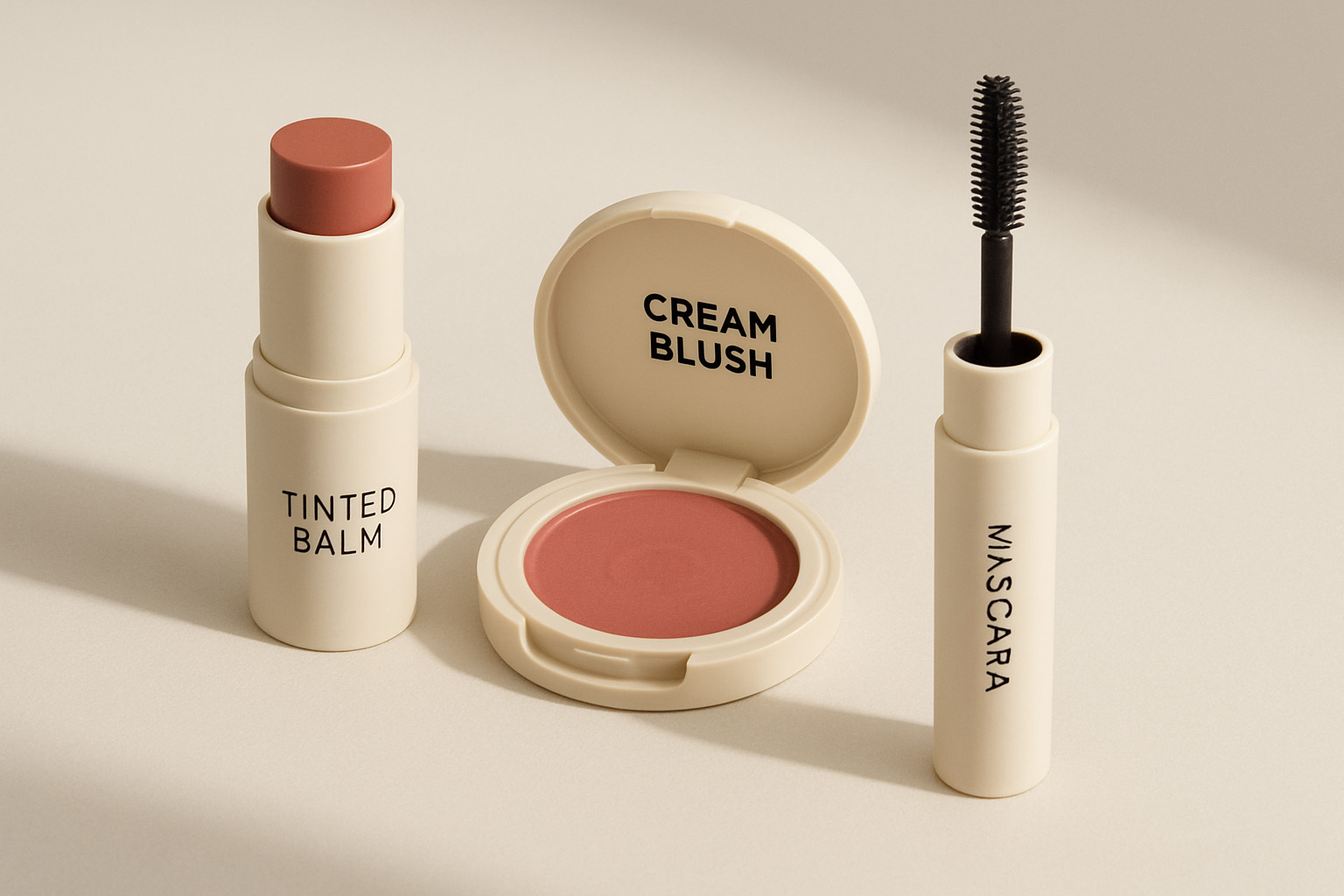
As Dr. Michael Gowen wisely notes, “In pre-teen and teen years, you can never go wrong with a gentle skincare routine.” This gentle philosophy naturally extends to makeup as well. The sweet spot for teen makeup? Products that feel comfortable, look natural, and treat young skin kindly.
For makeup newbies, a few well-chosen essentials can make all the difference. Start with a tinted lip balm or lip oil – Dior Lip Glow Oil has become something of a status symbol among teens looking for that touch of luxury, though plenty of affordable options with SPF protection work beautifully too.
A cream blush creates that perfect “just played outside” flush and blends easily with fingertips – no brushes required! Look for formulas that can do double-duty on lips for a coordinated look.
Tubing mascara has become a game-changer for teens. These clever formulations coat lashes with polymers that wash away easily with warm water – ideal for young people who might not yet have mastered the art of thorough makeup removal.
For complexion products, a lightweight skin tint or tinted moisturizer offers just enough coverage to even tone without looking like makeup. Many teens report loving how these products let their skin shine through – freckles and all!
Rounding out the basics, a clear brow gel helps shape and tame eyebrows without the learning curve that comes with pencils or powders. It’s an effortless way to frame the face.
Starter Makeup Bag Checklist
Beyond the products themselves, helping teens establish good makeup habits from the start sets them up for a lifetime of healthy beauty practices.
When it comes to application tools, less is definitely more. Fingers work beautifully for cream products, and investing in just 2-3 quality brushes makes more sense than overwhelming beginners with large sets. Teaching weekly brush cleaning with gentle soap prevents breakouts and extends the life of tools.
Shade matching can be tricky even for adults! Encourage teens to test products in natural light whenever possible. For any complexion products, matching to the jawline (not hand) gives the most accurate results. Sheer, buildable formulas are the most forgiving for beginners.
Fifteen-year-old Leela shared that her hydrating tinted moisturizer “does a really good job of hydrating skin and keeping it nourished and soft without it feeling too heavy” – exactly what teens need as they steer their first beauty products for teens.
Perhaps most importantly, teach proper removal! Micellar water works well for light makeup, while cleansing balms provide more thorough removal. The cardinal rule? Never sleep in makeup, especially eye makeup.
Safety & Hygiene for Beauty products for teens
Makeup safety deserves special attention with young users who might be tempted to share products or follow viral trends without understanding the risks.
Product sharing might seem harmless, but it’s actually a major source of infection. Never share eye products like mascara or eyeliner, as they can transmit serious eye infections. Avoid sharing lip products to prevent cold sores and other viral transmissions. If sharing is absolutely unavoidable (though it shouldn’t be!), use clean spatulas or cotton swabs to dispense products.
Teens should also learn to track expiration dates. Mascara needs replacement every 3 months, liquid and cream products generally last 6-12 months, and powder products can stay fresh for 1-2 years. A simple tip? Use a permanent marker to note the purchase date right on the product.

One charming trend we’ve spotted is the emergence of beauty “emergency kits” for school. Today’s teens are swapping traditional band-aids for pimple patches, lip balms, and hand sanitizer in their school bags. Fifteen-year-old Kennedy shared, “I keep mine in my school bag everyday,” referring to her mini perfume set – showing how these small beauty touchpoints help teens feel confident throughout their day.
The best beauty products for teens improve rather than mask – celebrating that special time when young people are finding their unique beauty and learning to care for themselves with products that respect both their skin and their developing sense of self.
Set Up for Success: Building a Teen Routine & Vanity Space
Creating a consistent skincare routine isn’t just about the products – it’s also about setting up a space that makes skincare feel like a special ritual rather than another chore. For teens, having an organized, Instagram-worthy vanity can actually boost compliance with their skincare routine.

Step-by-Step Routine
When it comes to Beauty products for teens, simplicity is key. Dr. Anjali Mahto puts it perfectly: “When it comes to younger skin, we build a routine that is simple, effective, but one that doesn’t overwhelm the skin barrier.”
For mornings, teens should follow a straightforward approach: gentle cleanser, optional lightweight hydrating toner or serum, moisturizer, and then sunscreen – which is absolutely non-negotiable! A touch of minimal makeup can be added if desired.
Evenings call for a similar flow: makeup removal (if worn), cleanser, any treatment products for specific concerns, and finally moisturizer. The beauty of this simple structure is that it’s easy to remember and quick to complete – perfect for busy teen schedules and varying energy levels.
One 16-year-old we interviewed mentioned that setting a phone alarm helped her remember her routine: “I just do my skincare right after brushing my teeth, so it becomes automatic. My skin has never looked better!”
Vanity Organization
Having an organized space isn’t just about those satisfying TikTok organization videos – it actually helps teens maintain product hygiene and routine consistency.
Rolling carts have become the MVP of teen vanity setups. These multi-tier organizers can be moved as needed and don’t require permanent furniture installation – perfect for teens who might be sharing bathroom space with family members. The top tier typically holds daily essentials, while lower tiers store less frequently used items.
Those trendy mini fridges for skincare? While not necessary, they can be fun for storing sheet masks (which feel amazingly refreshing when chilled), certain vitamin C formulations, or aloe gel for sunburn relief. If budget is a concern, a regular refrigerator works just fine for the occasional product that benefits from cooling.
Decluttering makes all the difference in maintaining a routine. One mother shared her daughter’s success story: “Organizing products on a rolling cart for easy access before school has made her morning routine much more manageable. She can see everything at once and doesn’t skip steps anymore.”
For teens who share bathroom space, using a caddy to transport Beauty products for teens between their bedroom and bathroom can be a practical solution that gives them ownership of their routine.
Age-Based Tweaks (12-14 vs 15-18)
Skincare needs naturally evolve throughout the teen years. For early teens (ages 12-14), the focus should remain on establishing the basic 3-step routine: cleanse, moisturize, protect. This age group benefits most from developing consistent sunscreen habits, using gentle fragrance-free formulations, and having simple spot treatments on hand for the occasional breakout.
As teens move into the 15-18 range, their routines can gradually become more sophisticated. They might add toners or serums targeted to specific concerns, develop more customized routines based on their skin type, and potentially introduce very mild actives like low-percentage salicylic acid.
Regular dermatologist check-ins are invaluable if possible, especially for teens with persistent skin concerns. As Dr. Sreedhar Krishna explains, “This is when hormonal changes can lead to skin issues like acne,” and professional guidance can prevent scarring and unnecessary experimentation with products that might make matters worse.
Ingredient Watchlist: Avoid These
While we’ve talked about what to include in teen routines, knowing what to avoid is equally important. Synthetic fragrance tops the list of problematic ingredients – it can trigger irritation and allergic reactions, and is often mysteriously listed simply as “fragrance” or “parfum” on labels. This is particularly troublesome for sensitive or acne-prone skin.
Alcohol Denat (denatured alcohol) is another common culprit in teen-marketed products, especially those promising to control oil. While it might provide temporary oil control, it’s ultimately drying and potentially irritating, compromising the skin barrier that’s so crucial for healthy skin.
Perhaps most concerning are endocrine disruptors found in many beauty products. According to research on endocrine disruptors, certain chemicals may interfere with hormone function – a particularly concerning issue for teens whose bodies are still developing.
Parabens are preservatives with potential hormone-disrupting effects that teens should avoid. When shopping for Beauty products for teens, look for “paraben-free” labeling. Safer alternatives include preservatives like phenoxyethanol and potassium sorbate.
One particularly troubling finding from our research: “Beauty products marketed to women of color contain higher levels of toxic chemicals, leading to greater health risks.” This highlights why ingredient scrutiny is essential regardless of marketing claims or who the product seems to be targeting.
A teen’s vanity setup might look cute on Instagram, but what matters most is creating a sustainable routine with safe products that will support their skin through these formative years and beyond.
Frequently Asked Questions about Beauty products for teens
Navigating skincare as a teen (or as a parent of one) can feel overwhelming. Let’s address some of the most common questions I hear from teens and parents about Beauty products for teens.
At what age should I start skincare?
Most dermatologists agree that a basic skincare routine can begin around age 12, typically when puberty starts. As Dr. Sreedhar Krishna explains, “Twelve is a good ballpark age but it comes down to the onset of puberty. This is when hormonal changes can lead to skin issues like acne.”
That said, certain skincare habits should actually start much earlier in childhood. Teaching kids about gentle face washing, applying sunscreen daily, and using moisturizer when skin feels dry lays an important foundation.
For pre-teens, less is definitely more. Focus on building consistent habits rather than introducing multiple products. A simple routine of cleansing, moisturizing, and sun protection provides everything a young person needs until specific concerns develop.
“My 11-year-old daughter was begging for a 10-step routine because of TikTok,” one mom shared with me. “We compromised with a gentle cleanser and SPF, and she actually loves the simplicity now.”
Can teens use retinol or acids?
I get this question constantly, especially from teens dealing with acne or parents trying to help them. The short answer? Proceed with caution.
Retinol is generally not necessary for young teens. While dermatologists might prescribe retinoids for severe acne in older teens (usually 16+), this powerful ingredient requires careful use. If a dermatologist does recommend retinol, diligent sun protection becomes non-negotiable, and the product should be introduced extremely gradually—think once weekly to start.
As for acids, mild concentrations can be appropriate in certain cases. Salicylic acid at 1-2% is generally considered safe for teens dealing with breakouts. Older teens (around 15+) might cautiously experiment with low-percentage glycolic acid products. The key is starting with lower concentrations, using them less frequently than directed at first, and watching closely for any signs of irritation or dryness.
Dr. Anjali Mahto offers wise advice here: “The main thing to keep in mind when it comes to younger skin is that we build a routine that is simple, effective, but one that doesn’t overwhelm the skin barrier.”
How do I pick products for sensitive skin?
Sensitive skin requires extra care, especially during the teenage years when hormones already make skin more reactive. Here’s how to steer this challenge:
Patch testing is your best friend. Before applying any new product to your face, test it behind your ear or on your inner arm for 24-48 hours. Watch for any redness, itching, or irritation. Only if there’s no reaction should you try it on your face.
Look specifically for fragrance-free formulations—not just products labeled “unscented,” which may still contain masking fragrances. Despite their natural appeal, essential oils can be surprisingly irritating for sensitive skin. Generally, products with shorter ingredient lists tend to cause fewer reactions.
Sixteen-year-old Maya shared her experience: “I learned that ‘natural’ doesn’t always mean better for my skin. Finding fragrance-free products made the biggest difference after months of redness and irritation.”
For teens with persistent sensitivity or conditions like eczema or rosacea, scheduling a visit with a dermatologist is truly worthwhile. They can provide personalized recommendations based on your specific skin type and possibly prescribe medicated options if needed.
Sensitivity can change throughout your teen years as hormones fluctuate, so what works perfectly one month might need adjustment the next. Listening to your skin is perhaps the most important skill any teen can develop on their beauty journey.
Conclusion
The teen years mark the beginning of a lifelong relationship with skincare and beauty. Creating thoughtful routines during this time isn’t just about managing breakouts or oiliness today—it’s about building healthy habits that will benefit skin for decades to come.
At Beyond Beauty Lab, we believe teen beauty should focus on three core principles: protection, gentle care, and education. As dermatologist Dr. Emma Craythorne wisely notes, “Teenage girls need very gentle products with minimal ingredients. They have delicate skin and it should be protected.” This philosophy guides everything we recommend for young skin.
The best skincare routine is one that actually gets followed! For busy teens juggling school, activities, and social lives, this typically means:
Simple steps that fit into hectic morning and evening schedules
Feel-good textures that make application enjoyable rather than a chore
Visible improvements for common concerns like occasional breakouts
Earth-friendly formulations that align with values
Today’s teens are driving remarkable change throughout the beauty industry. More ingredient-conscious than any generation before them, Gen Z understands intuitively that what goes on their skin matters—both for their personal health and for the planet’s wellbeing. This awareness has accelerated the clean beauty movement and pushed brands to be more transparent about formulations.
Your teen skincare journey should feel empowering, not overwhelming. Start with the basics—gentle cleansing, appropriate hydration, and daily sun protection—and build from there as needed. For those ready to create a complete routine, our Ultimate Clean Beauty Starter Kit provides additional guidance on essential products that work harmoniously together.
Every teen’s path to healthy, balanced skin is uniquely their own. There’s no one-size-fits-all approach to beauty products for teens. By focusing on gentle, effective products and consistent habits, today’s teenagers can develop not just clearer skin, but also the confidence that comes with taking care of themselves—truly the most beautiful outcome of all.

